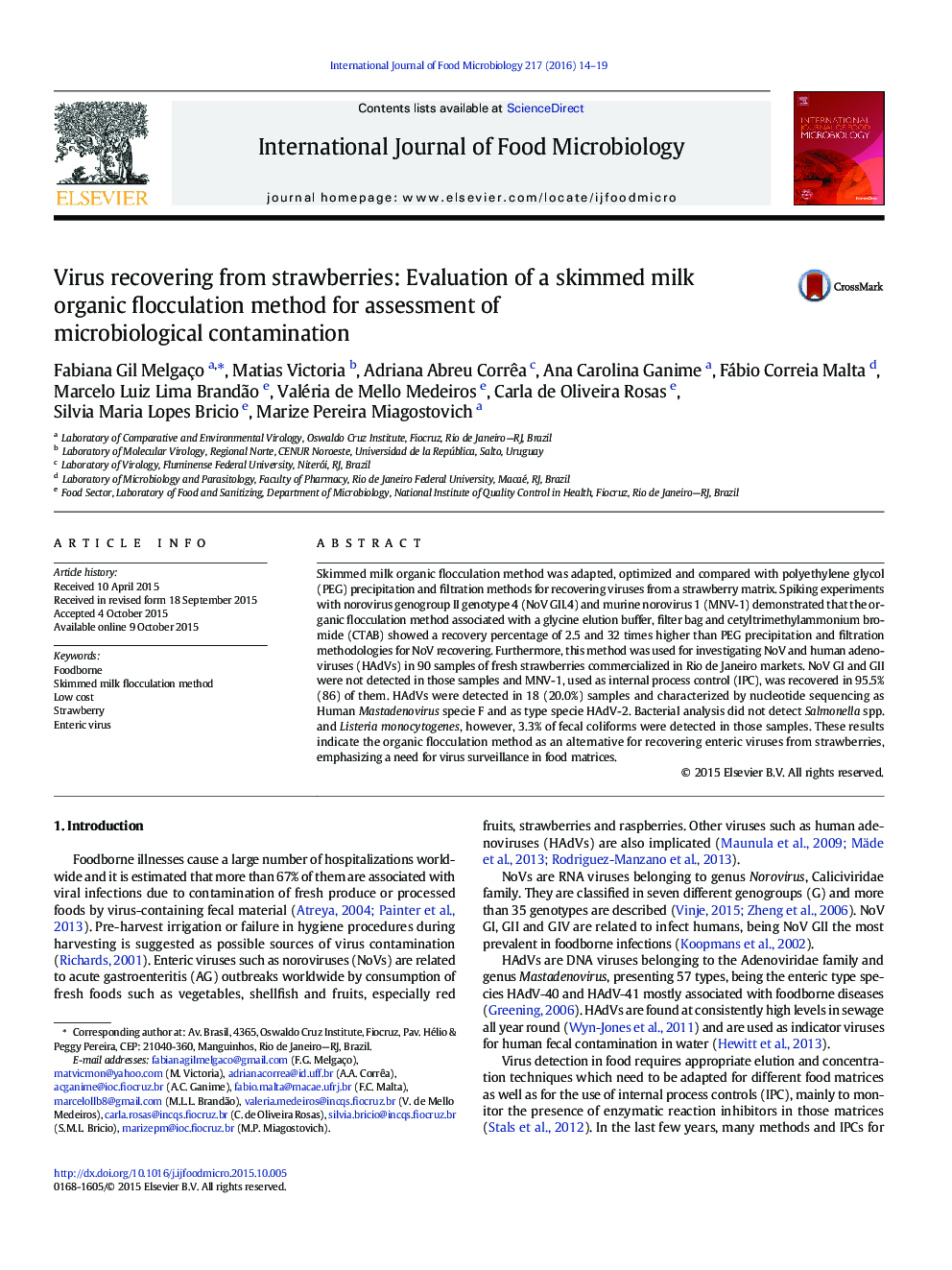| Article ID | Journal | Published Year | Pages | File Type |
|---|---|---|---|---|
| 4366391 | International Journal of Food Microbiology | 2016 | 6 Pages |
•Evaluation of low cost elution–concentration method for virus detection in berries.•Organic flocculation method used for recovering enteric viruses from strawberries.•Detection of human adenovirus in commercial samples
Skimmed milk organic flocculation method was adapted, optimized and compared with polyethylene glycol (PEG) precipitation and filtration methods for recovering viruses from a strawberry matrix. Spiking experiments with norovirus genogroup II genotype 4 (NoV GII.4) and murine norovirus 1 (MNV-1) demonstrated that the organic flocculation method associated with a glycine elution buffer, filter bag and cetyltrimethylammonium bromide (CTAB) showed a recovery percentage of 2.5 and 32 times higher than PEG precipitation and filtration methodologies for NoV recovering. Furthermore, this method was used for investigating NoV and human adenoviruses (HAdVs) in 90 samples of fresh strawberries commercialized in Rio de Janeiro markets. NoV GI and GII were not detected in those samples and MNV-1, used as internal process control (IPC), was recovered in 95.5% (86) of them. HAdVs were detected in 18 (20.0%) samples and characterized by nucleotide sequencing as Human Mastadenovirus specie F and as type specie HAdV-2. Bacterial analysis did not detect Salmonella spp. and Listeria monocytogenes, however, 3.3% of fecal coliforms were detected in those samples. These results indicate the organic flocculation method as an alternative for recovering enteric viruses from strawberries, emphasizing a need for virus surveillance in food matrices.
